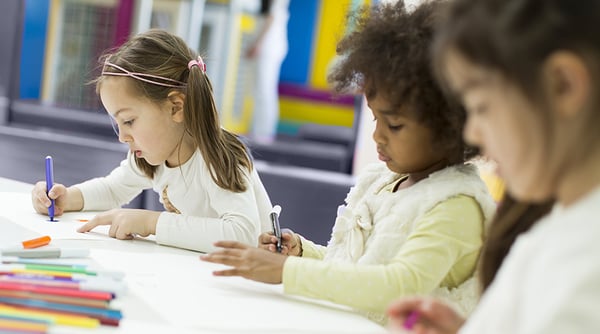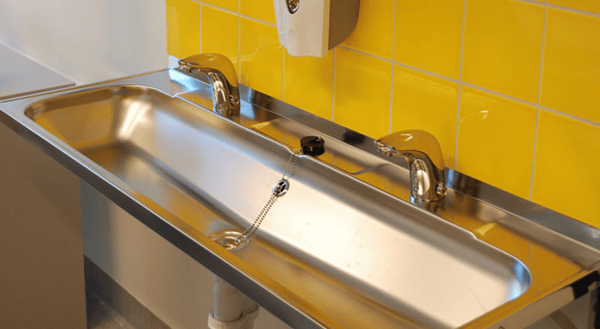As schools across Europe work to improve hygiene and manage contagion, many seek short-term upgrades with long-term potential to keep students and staff safer. Discover some of the most impactful solutions here.

In the wake of the Covid-19 pandemic, as schools were feared potential hotbeds for the virus, immediate efforts to keep students and staff safe were often operational. Bathrooms were cleaned more often, surfaces sanitised regularly, and pupils and staff were recommended to wash their hands constantly.
While research conducted by the New York Times in both Britain and the United States in November 2020 discovered that school reopening has not fuelled surges in local transmission of the virus, many schools around the world are nevertheless looking for ways to keep viruses and bacteria at bay over the long run – whether it’s Covid-19, a future pandemic or the seasonal flu.
“I think there’s a pretty good base of evidence now that schools can open safely in the presence of strong safety plans,” Dr Michael Beach, a senior scientist at the Centres for Disease Control and Prevention told the New York Times.
So what do safety plans involve? We all understand by now that WHO ranks hand washing as the number-one action for school administrators, teachers and staff to promote: keeping our hands clean is one of the many ways to prevent sickness.
And on top of quick operational changes – cleaning surfaces and washing hands – many schools are making short-term design changes that are already improving hygiene, reducing the risk of contagion for the long term.
Let’s have a look at what’s changing in our schools.
 Touchless faucets significantly promote hand hygiene compared to manual faucets.
Touchless faucets significantly promote hand hygiene compared to manual faucets.
1. Fully automated environments
To further reduce the spread of harmful microbes, schools are going touchless. Why? Up to 80% of the most common diseases are transmitted through person-to-person contact or by touching the same surfaces.
School bathrooms, which potentially have the highest concentration of harmful microbes, have become a central focus area for touchless devices, including touchless toilets, soap and towel dispensers, and, of course, touchless faucets.
A scientific article in the Canadian Journal of Microbiology shows that touchless faucets significantly promote hand hygiene compared to manual faucets. It tested for the presence of bacteria and viruses on two types of smart touchless faucets compared to manual faucets – significantly less microbial growth was found on the smart faucets.
And switching to touchless lavatory faucets is a relatively easy investment schools can apply in the short-term: an investment that will not only help reduce the spread of harmful microbes but will also cut water consumption and energy bills in the long run. And the incorporated Bluetooth technology makes it easy to program regular, automated flushing that can prevent harmful microbes from forming in stagnated water (especially handy in the event of future lockdowns).
2. Use of anti-microbial materials
Communal surfaces are widespread in school buildings – from shared computers, desks, tables, doors, and bathroom facilities – all of which are potential sources of microbe spread.
Today, many schools are embracing easy-to-clean materials with anti-microbial properties (which inhibit the ability of microorganisms to grow) in the selection of interior fabrics and fixtures.
For door hardware – including handles and pull bars, for instance – copper and its alloys (which are metals and not finishes) are being increasingly used for their properties to destroy a wide range of microorganisms. They are hard-wearing and naturally kill bacteria 24/7.
3. HVAC systems and window replacements
Handwashing and surface cleaning aside, it is widely understood that fresh and clean air can hugely contribute to slowing the spread of the virus.
This means that schools are modernising their HVAC systems to circulate the air quickly and cleanse the air more frequently. Others, instead, are replacing poorly designed windows with casement windows that catch and deflect breeze from varying angles.
The more the world learns about COVID-19, the more it seems clear that the changes we make to our habits and to our built environment are here to stay. As the pandemic fades, which it will hopefully soon, well-ventilated, automated buildings will continue to provide a safer, healthier, more comfortable indoor environment — starting with our schools.






 Touchless faucets significantly promote hand hygiene compared to manual faucets.
Touchless faucets significantly promote hand hygiene compared to manual faucets.